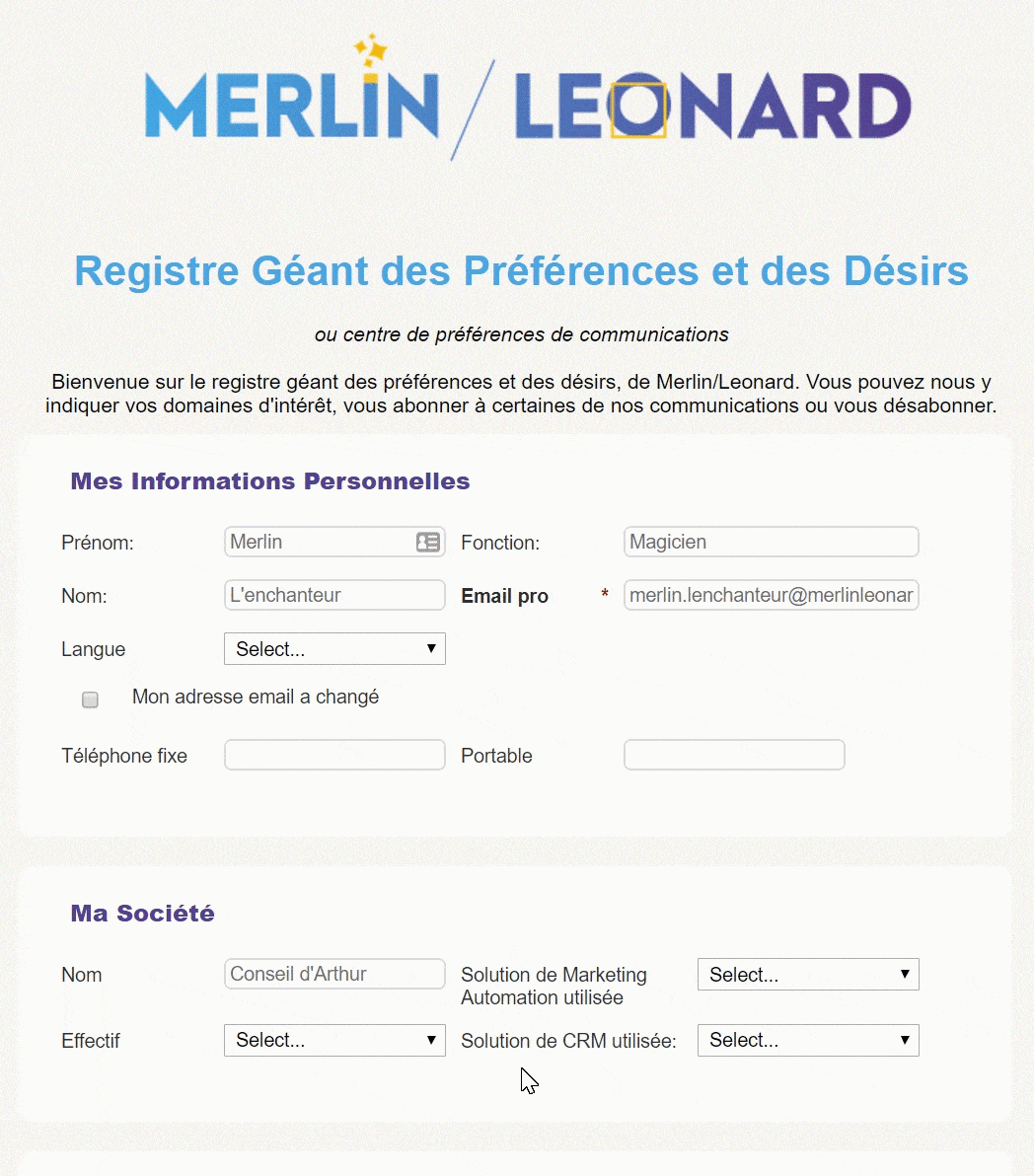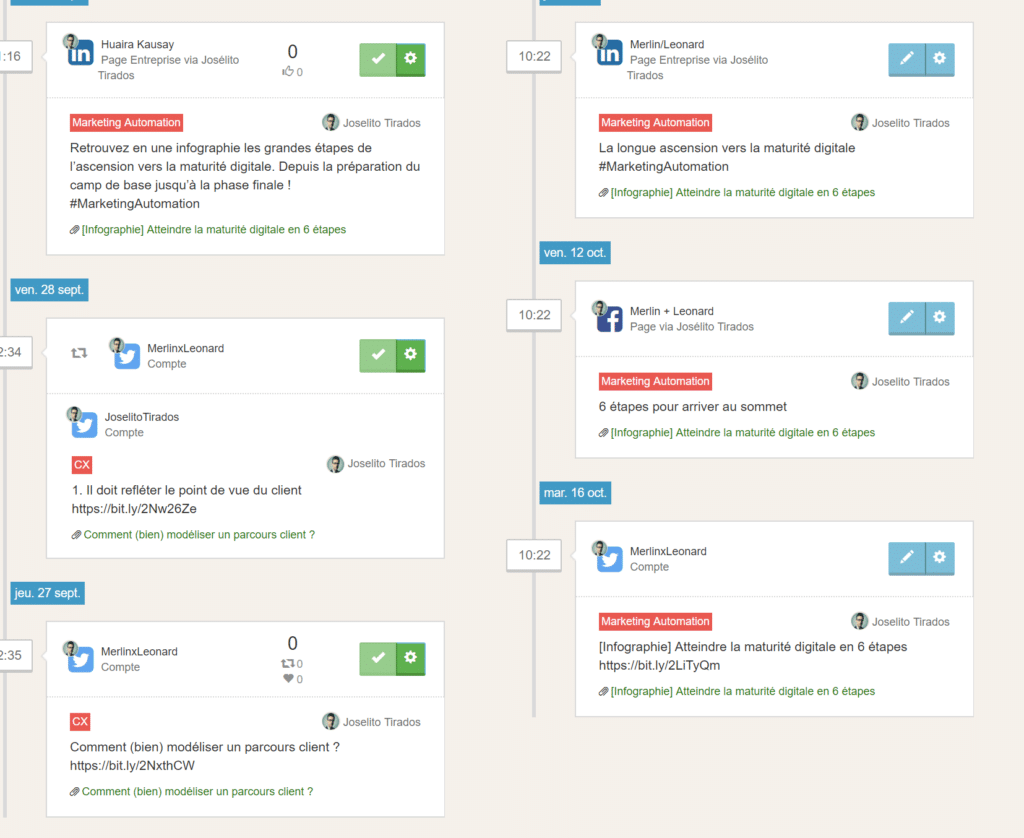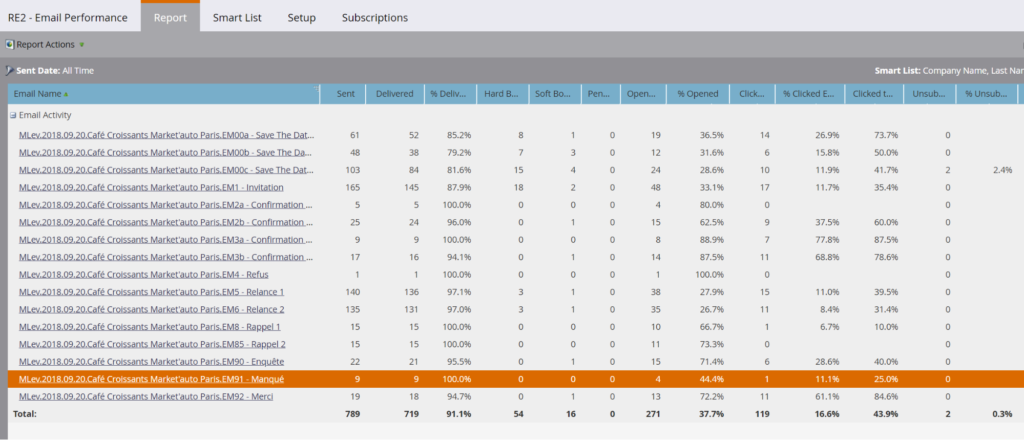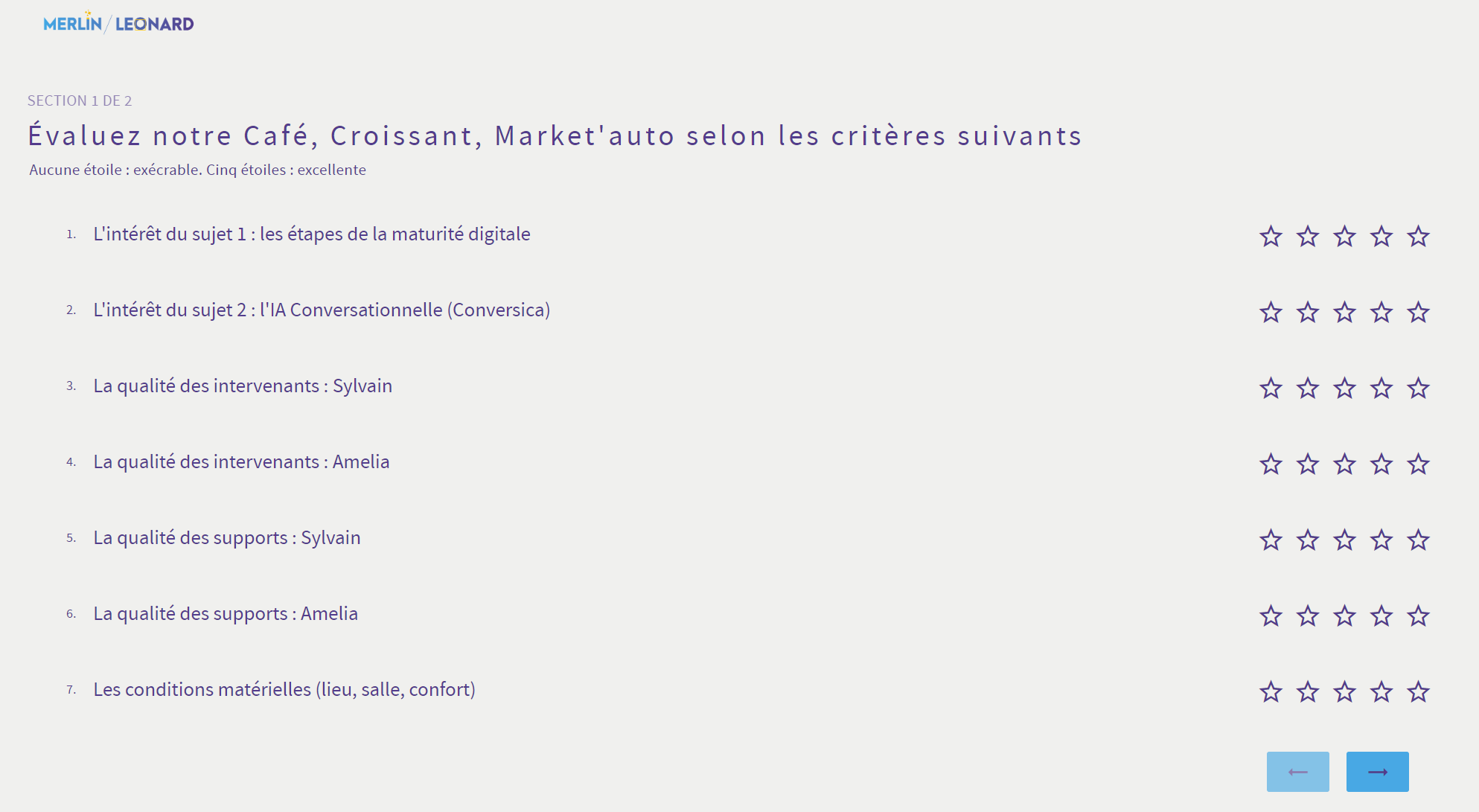Here, at last, is the continuation of the journey towards B2B digital marketing maturity! Let me remind you of the first steps: Preparing for the journey, the first 3 months and content strategy, and setting up your marketing automation.
Table of contents of the series :
- Preparing for the change
- Succeeding with your content strategy
- Starting your marketing automation
- Moving towards ” demand generation“
- Conversational marketing (in progress)
- Conversational marketing (in progress)
- Revenue performance management (in progress)
You have now left the green valleys of the early days of digital marketing to begin the climb up the long road to marketing success. With eyes filled with delight, you have, in the previous step:
- Studied your prospects and customers, and their journeys with your brand;
- Launched your content strategy: the first white papers, infographics, blog posts are coming out;
- Automated existing campaigns and gained confidence in your marketing automation solution.
This is just the beginning!
It is at this stage that you will start to bring your prospects to you, hence the name “demand generation”: you will… generate demand (!).
In order to generate demand and not calls for help, I have mobilized all my alchemist knowledge to prepare a summary for you. No need to thank me.
- The risks of the first slopes
- Leverage your data to enrich customer knowledge
- Track lead acquisition: where do they come from?
- Build your community of ambassadors and automate your content distribution
- More inbound and less outbound
- Bringing up the voice of the customer
Demand generation: the risks of the first slopes
This step is a crucial point, and often a plateau for many of the companies we support; they get “stuck” as they approach this stage and are unable to progress. Why do they get stuck? Here are the causes that I have frequently encountered:
- The organization of operational marketing: very often, few people were mobilized at the beginning to become “champions” and it is enough that these people leave for another department or another company for everything to stop. The skills development is then lost; management wonders how best to continue: recruit and train another person, at the risk of seeing them leave in turn?
- Content production is not “inbound marketing” oriented: the content is all interesting, but it does not provide answers to the same buyer persona’s problems throughout its maturation cycle vis-à-vis your company, and therefore does not follow on from each other. The content produced is spread over all the buyer personas, all the offers and all the moments of the customer journey. This makes it impossible to complete an end-to-end customer journey and lead generation fails. You “type” all over the place, without strategy, and you burn out.
- Content production exhaustion: you have decided to produce your content internally and the people you mobilized at the start are starting to run out of steam because they are not content creation professionals.
- The perception of the tools: if your thought process is “These technologies are not bad, but it’s a bit expensive to “blaster” emails”, it’s because you probably missed one of the previous steps.😉
Leverage your data to enrich customer knowledge
Since you deployed your marketing automation solution, you have, intentionally or not, started to accumulate very valuable data that needs to be leveraged.
The forms
You have set up a few forms that your visitors have filled out (contact forms, first download of content, newsletter…). You start collecting explicit data about the people who fill in your forms: name, first name, email, company, city, position in the company, phone… which are still, however, quite basic data.

Campaign results
At this point you have the first results of your campaigns, and you can use these results in your targeting:
- You know, for example, who downloaded your white paper or filled out a contact form;
- You know who showed interest in that email series you sent;
- You know who signed up for your webinar without attending it;
- You know who went to your preference center.
Speaking of preference centers, does yours meet all the requirements to be operational?
Implicit data
You can now associate data with each other and infer (or deduce) their digital behavior:
- interests deduced from the pages visited ;
- the gender deduced from the first name ;
- the decision level deduced from their position;
- the freshness of the last contact…
The possibilities are endless and your imagination is the only limit.
Acquisition data
I would like to take this opportunity to alert you to the importance of properly tracking lead acquisition.

This should be your normal reaction. “Tracking acquisition” is simply being able to answer the questions “Where are our leads coming from? How are we acquiring new opportunities?”
Track lead acquisition: where do they come from?
Without knowing the source, campaign or partner that brought us a lead, it’s impossible to answer the question asked by marketing management, which will eventually come up, “What type of campaign should we be reinforcing to maximize our acquisition processes?” Not tracking lead acquisition in the early stages is extremely detrimental a little further down the line, as it’s a topic on which data recovery is complex.
Is it blurry? Let’s take an example
You finally have your first white paper and you hope to tell the world about it. Your imagination is running wild! You’re going to:
- launch an email campaign on your base;
- start one or more paid campaigns on LinkedIn and Google ;
- convince partners to distribute your white paper (for cash or not), they will then do an emailing campaign or integrate it in their social network campaigns;
- integrate it into your collaborators’ signatures;
- and that’s not all…
Apply a coefficient
You multiply all these actions for all your campaigns and content (webinars, events, ebooks, quizzes…).
At some point, you are bound to ask yourself:
- what source brought me the most new people (white paper? webinar? ebook?)
- which distribution method worked best? (partner #1? partner #2? your own campaigns? signups? social networks?)
- which channel works best (LinkedIn? Google?)
To identify these different sources, you need to standardize how you’ll track this information, and provide unique URLs for each of your amplification sources.
Build your community of ambassadors and automate your content distribution
Following the previous step, your first content comes out of the ground, and it is with a tear in your eye and a heart full of excitement (yes, it is!) that you are going to “push” them on your company’s LinkedIn, Facebook, Instagram – and so on – pages.

Mitigating Natural Breathlessness
Seeing that the number of interactions, likes, retweets is limited, you will send an internal email to the whole company explaining how important it is to like the content. You’ll get a small boost… which will quickly fade away. So the next day, you start again: re-email everyone, re-boost, re-exhaustion… You then receive an email from HR explaining that you have to stop pestering the whole company with your collective emails. The risk is great to enter a phase of deep doubts, as you have invested so much effort in these contents, which do not reach their audience.
The social media management
Don’t panic! There is a solution: amplify your content with a “social media management” solution, such as Limber, to build a community of ambassadors little by little. These solutions allow you to :
- gather the content produced, get content from other sources and organize it by theme;
- Allow your employees to create their own distribution campaigns, which will improve their personal brand awareness;
- Take control of certain employee social networks – with their consent – to create content amplification scenarios over time, using multiple accounts and social networks.

A perfect tool for the sales
Sales people should be particularly fond of this type of solution, as they will see their Facebook, Twitter and LinkedIn feeds filled with high value-added content, without any effort on their part! This is a prerequisite for implementing a social selling strategy. But this requires that someone takes charge of this subject, builds the scenarios, trains the employees, and, little by little, builds a community of ambassadors: the social media manager. This person will also have to be on the lookout for discussions on social networks and respond appropriately, or even hand over to a sales person behind them.
The objective of all these steps is to initiate qualified conversations! (I say this because as a good Leonard, I tend to stay in my lab and play with technology…).
More inbound and less outbound
Well, I lied to you a little bit… We’re not going to do inbound marketing right away, but we’re going to cut down on outbound marketing!
At this point, the majority of your campaigns are probably “outbound” marketing: you send a message to your customers or prospects while trying to target as best as possible. These are campaigns that usually have a fairly limited success rate. Good news! From now on, we will try to send less emails:
- by taking advantage of the data you have gleaned so far,
- by enriching your knowledge of prospects and customers,
- by “chaining” your campaigns,
- by exploiting all the data we talked about in the previous points.
Do not disturb
You can use this data to refine your targeting and avoid “confusing” people who are clearly not responding. There is a risk that these people will unsubscribe from your mailings and you will lose them forever.
Differentiate shipments
You can also use this data to differentiate your mailings. For example, at Merlin/Leonard, for the same email, we differentiate our emails according to the first name/surname (very important in the service), the gender (male/female), and the fact that the person has passed on the preference center or not. Result: people who receive these emails are more likely to open them! Engagement is facilitated. As proof, look at the emailing stats of our last “Coffee, croissants, Market’auto” (soon to be renamed “Marketo Office Hours”).

Fighting your egocentric tendencies
Your greatest difficulty will surely be psychological: it takes a great deal of willpower not to “water” your base with an invitation to an event. You are convinced that you could include this target in your emailing for your white paper, and then this one, and then, damn it, let’s include the whole base! Go back in your memory and remember someone you knew – man or woman – who only listened to himself, talked about himself and never asked you if you were interested in what he was talking about; you know like Jean Dujardin in Brice de Nice “Come on, let’s talk about me…”
Do you have it? Well, that’s probably the effect you’ll have on a whole bunch of people who weren’t expecting your email and don’t care.
Refine, refine, refine!
Bringing up the voice of the customer
The last thing to do in this phase is to ask your customers for their opinion. For me, this is the richest source of improvement. It’s not a matter of making a cold questionnaire with myriads of questions, but of positioning at strategic points of your customer journey a “hot” feedback, short, and delivered just after the interaction with you. For example, at the end of your event or webinar, at the end of the visit on your site. Don’t be afraid, look at what we offer at the exit of our “Coffee, croissants, etc.”!

Identify your fans… and your detractors
Again, organization is required to:
- make sure you ask for feedback every time (and not at every seventh event) ;
- that the data goes back into your CRM and marketing automation solutions;
- that you act on the feedback: a dissatisfied prospect or customer should be contacted immediately.
This will allow you to further refine your targeting by identifying “Fans” (seriously, I have this status in my CRM…) or detractors.
You’re ready to take full advantage of your customer data, track the acquisition of your various leads and address your prospects in an ultra-personalized way, knowing their needs, interests and preferences. You are on the verge of building a community of ambassadors and managing the automation of content delivery with a master’s (guild?) hand. You’re on the road to demand generation! The rest of the journey in the next episode. Stay tuned.
In the meantime, I invite you to download the white paper that covers all the steps to transform your marketing into digital marketing.
Crédits image : Vecteezy






